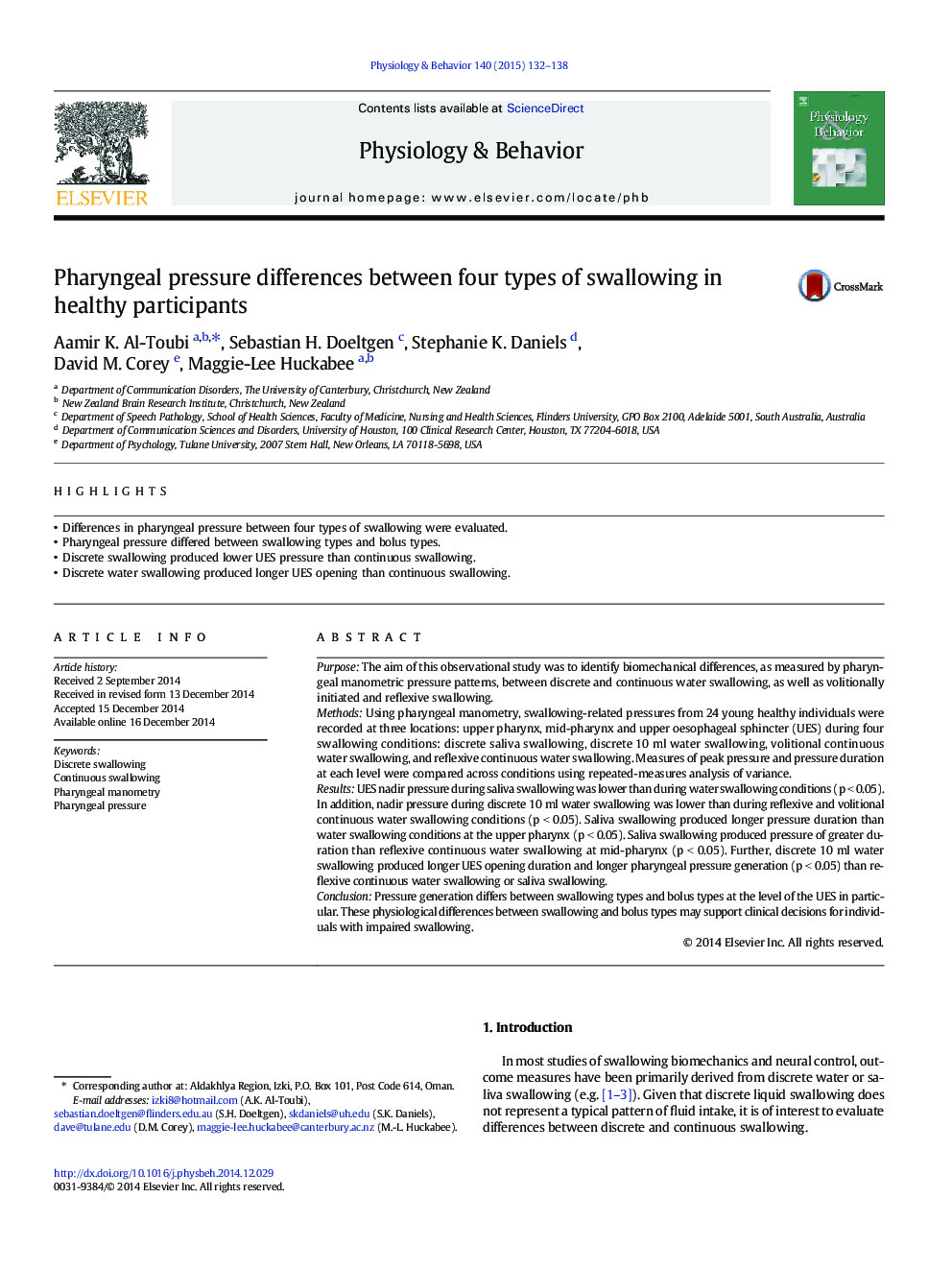| کد مقاله | کد نشریه | سال انتشار | مقاله انگلیسی | نسخه تمام متن |
|---|---|---|---|---|
| 5923826 | 1571177 | 2015 | 7 صفحه PDF | دانلود رایگان |
- Differences in pharyngeal pressure between four types of swallowing were evaluated.
- Pharyngeal pressure differed between swallowing types and bolus types.
- Discrete swallowing produced lower UES pressure than continuous swallowing.
- Discrete water swallowing produced longer UES opening than continuous swallowing.
PurposeThe aim of this observational study was to identify biomechanical differences, as measured by pharyngeal manometric pressure patterns, between discrete and continuous water swallowing, as well as volitionally initiated and reflexive swallowing.MethodsUsing pharyngeal manometry, swallowing-related pressures from 24 young healthy individuals were recorded at three locations: upper pharynx, mid-pharynx and upper oesophageal sphincter (UES) during four swallowing conditions: discrete saliva swallowing, discrete 10 ml water swallowing, volitional continuous water swallowing, and reflexive continuous water swallowing. Measures of peak pressure and pressure duration at each level were compared across conditions using repeated-measures analysis of variance.ResultsUES nadir pressure during saliva swallowing was lower than during water swallowing conditions (p < 0.05). In addition, nadir pressure during discrete 10 ml water swallowing was lower than during reflexive and volitional continuous water swallowing conditions (p < 0.05). Saliva swallowing produced longer pressure duration than water swallowing conditions at the upper pharynx (p < 0.05). Saliva swallowing produced pressure of greater duration than reflexive continuous water swallowing at mid-pharynx (p < 0.05). Further, discrete 10 ml water swallowing produced longer UES opening duration and longer pharyngeal pressure generation (p < 0.05) than reflexive continuous water swallowing or saliva swallowing.ConclusionPressure generation differs between swallowing types and bolus types at the level of the UES in particular. These physiological differences between swallowing and bolus types may support clinical decisions for individuals with impaired swallowing.
Journal: Physiology & Behavior - Volume 140, 1 March 2015, Pages 132-138
